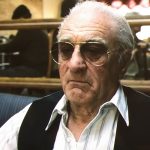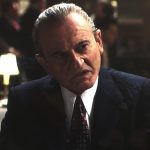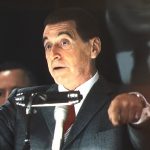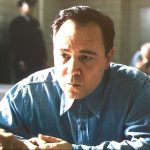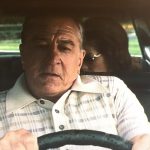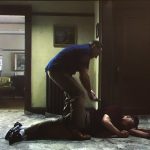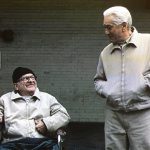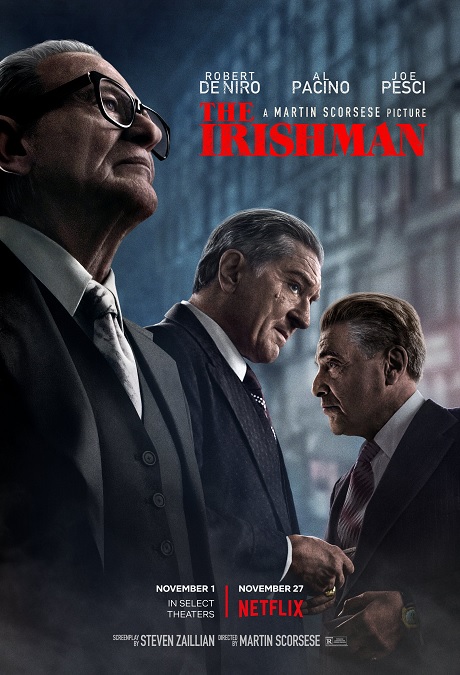



The Irishman – 2019
I have to say, I was kind of unimpressed with this movie. Am I saying it was a bad movie? Not at all. It was very good if you enjoy movies about the mafia. All I mean is that director Martin Scorsese has made this movie before, more than once. I found it no better or worse than his 1990 film, Goodfellas, which was also nominated for Best Picture. In fact, if you replace Ray Liota with Al Pacino, then you have the exact same three leading actors. It has the same kind of plot, the same kind of aesthetic, the same narrative structure, and took place in roughly the same time period.
So what was it that set The Irishman apart from Goodfellas? Well, nothing more than the fact that Goodfellas was largely fictional, while The Irishman was based on real people and events. That’s about it. After the movie, I watched a little segment where Robert De Niro, Al Pacino, Joe Pesci, and Martin Scorsese sat around a table and talked about their experiences in making the film, and even they said the same thing. Of course, this difference presented its own challenges and subtle differences in the way the actors approached their rolls, but really, I’d seen it all before.
This movie was about three and a half hours long, and I think it could have been cut down by at least an hour and a quarter before the quality of the film would have suffered. I can appreciate that Scorsese took the time to really develop his characters, something that many modern films fail to do, but I think he went overboard. And there were several climactic points in the film, after which the movie could have ended, but it just kept going. And while the scenes that came after were interesting, a lot of it felt kind-of unnecessary.
The main character, the one through whose perspective the film was told, was Frank Sheeran, a man who was, among other things, a well-liked hit man for the Bufalino crime family, headed by Russell Bufalino, played by Joe Pesci. The movie focuses on his friendship with the President of the International Brotherhood of Teamsters, Jimmy Hoffa, played by Pacino. There was a huge cast of supporting characters with a few recognizable names like Ray Ramano playing Sheeran’s lawyer, Bill Bufalino, and Anna Paquin, playing the grown up version of one of Frank’s four daughters, Peggy, the daughter who knew what her father was, and what he had done, and had refused to ever speak with him again. There was Stephen Graham, playing another crime boss, “Tony Pro” Provenzano, who hated Jimmy Hoffa. Also, there was Bobby Canavalle playing Skinny Razor, another hitman for the Bufalino family. And the last name that I easily recognized was Harvey Keitel, an actor who I have always enjoyed watching on the screen, playing Angelo Bruno, a high ranking Mafia boss.
Being in an epic that spanned around fifty years of history, the actors had to portray their characters at different ages. Scorsese considered the idea of using digital aging and de-aging techniques, and originally decided against it, saying that he didn’t want his cast to have to act with each other with tennis balls on their faces. But in the end, the technique was used and was mostly successful, though there were a few shots where the images were obviously altered. But as good as the de-aging shots were, I thought it was the old age makeup shots that were phenomenal. They really did a fantastic job of making the already old actors look even older. They did an especially great job with Joe Pesci.
And that brings me to the three main actors themselves. They are all skilled actors who have good on-screen chemistry with each other. De Niro played a roll that we have seen him play several times before, but I have to admit, he plays that character really well, very believably. The same could be said for Pacino. They were both pretty perfectly cast, and they executed their parts excellently.
But it was Joe Pesci who I’d like to focus on for a moment. It has been a while since I have seen him in any big movie. He was very busy during the 90s, starring in movies like Goodfellas, JFK, My Cousin Vinney, and Casino. But after Lethal Weapon 4 in 1998, he mostly retired from acting. He was only in three other films during the 2000s and 2010s, until he took the roll of Russell Bufalino in 2019. Apparently, Scorsese had to ask him over fifty times to play the part, but he kept refusing because he didn’t want to play yet another gangster. But Scorsese and De Niro eventually convinced him that this one would be different. And I have to admit it was. Yes, he was a gangster, but more reserved and much less violent. It was a very different side to his dangerous gangster persona, so very well-done Mr. Pesci. It was good to see you on the screen again.
One of the other things I liked about the film is that it was a historical drama. I did a little research and found that it was based on the book I Heard You Paint Houses by Charles Brandt, who reportedly heard the real Sheeran confess to Hoffa’s murder before he died of cancer in 2003. But there is actually no evidence to support his claim. Is it possible that the film is historically accurate? Sure. Is there proof that it is? No, not really. But then, Scorsese never claimed that it was.
